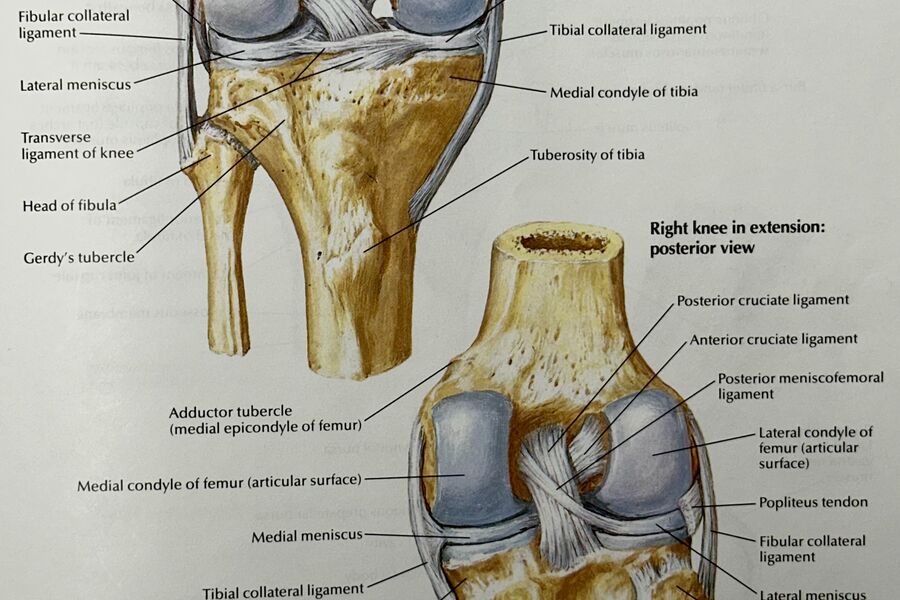What is an ACL injury?
What is the ACL?
ACL is the acronym for the Anterior Cruciate Ligament, which is one of the four main stabilizing ligaments of the knee. The knee is made up of three parts, the femur (thigh bone), the tibia (lower leg), and the patella (knee cap). A ligament is a tough, fibrous tissue that connects bones to form a joint.
The ACL prevents the tibia from slipping forward (or anteriorly) in front of the femur. It also gives rotary stabilization to allow for quick directional changes.
Unfortunately, the ACL is a commonly injured when planting, cutting, or pivoting during sports and exercise.
What is a ligament tear?
There are three grades or degrees of ligament sprains that can occur:
· Grade I – the ligament is stretched but still stable. There is pain initially, but it becomes milder over time.
· Grade II – the ligament is partially torn but still intact. There is a moderate amount of pain, along with swelling and bruising. Walking is painful.
· Grade III – the ligament is completely torn, and the knee is not stable. There is significant swelling and bruising. Pain is typically severe due to the irritation of the never endings. Walking is very difficult due to pain and instability.
Injuries may be contact or non-contact:
· Contact injuries occur when a sudden, high-energy impact is applied to the knee. This may be from falling to the ground, or if another person or object strikes the knee.
· Non-contact injuries often occur due to poor body positioning at the time of weight bearing on the leg. When a person suddenly twists or pivots to change directions, or possibly when landing from a jump, the ACL can be injured.
· Popping sound at the time of the injury
· Pain
· Swelling
· Decreased motion
· Instability or inability to stand or bear weight on the injured leg
· Stay off the leg and use crutches to assist with walking.
· Elevate the lower leg higher than the heart by lying in bed or on the couch with the leg on cushions or pillows. Sitting in a recliner is often not satisfactory unless the leg is further elevated in height.
· Decrease inflammation. Applying ice for 15-20 minute durations frequently, applying a compression wrap or sleeve around the knee, and taking non-steroidal anti-inflammatories (like ibuprofen) is typically advised (but speak with your physician first).
· Consult an orthopedic physician to have an X-ray to rule out fractures or other bone injuries as the cause of pain, and you may be prescribed medications to assist with pain and swelling. An MRI may be ordered to confirm the presence and severity of an ACL tear.
· Physical therapy should begin immediately to assist with decreasing inflammation and preventing loss of function.
A referral for physical therapy is not required for you to be seen at Biokinetics Rehab; you can call us to make an appointment right now at (828) 528-1222.
We work one-on-one with our clients instead of having 1-2 other clients overlapping your session. Your sessions will always be for a 60-minute duration with the same physical therapist. We will make every attempt to get you seen within 24-48 hours instead of having to wait weeks for an appointment. We have the ability to spend the time needed to address your concerns and have the knowledge and experience to restore you to your highest level of function.


